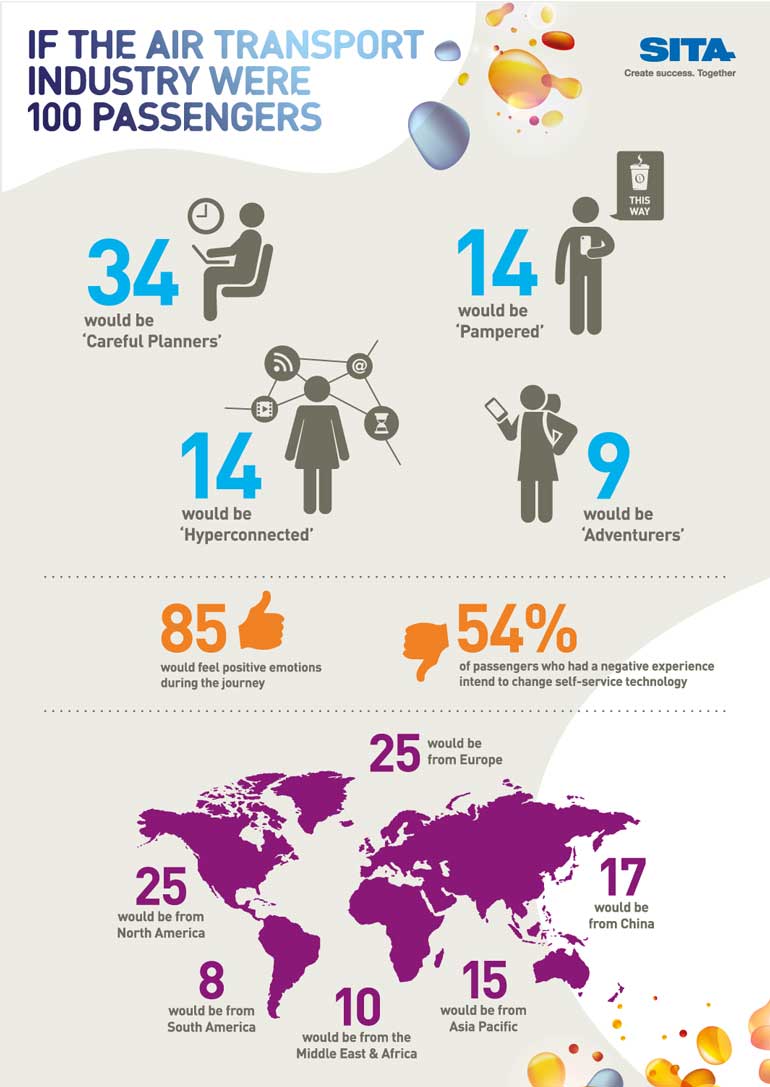Friday Dec 13, 2024
Friday Dec 13, 2024
Monday, 13 June 2016 00:00 - - {{hitsCtrl.values.hits}}



SITA’s survey shows airlines and airports must offer passengers choice and control
Airline passengers across the globe are so comfortable with technology today that they are choosing to use it rather than interacting with people. This is according to the ‘2016 SITA Passenger IT Trends Survey’, a global survey released recently by IT provider SITA and co-sponsored by Air Transport World.
SITA’s survey shows that 85% of passengers had a positive travel experience, up from 80% last year. Noticeably, passengers are happier at the steps of the journey where they have more choice and control in how they manage their trip. At booking, which they can do online, using a mobile or with an agent, 93% had a positive experience.
Passengers experience the most negative emotions during the security screening, passport control and baggage collection steps of the journey, peaking at nearly one third of passengers at security. These are also the steps with the least number of self-service technology options.
SITA CEO Francesco Violante said: “Knowing that passengers prefer using their own devices and self-service technology throughout the journey should encourage airlines, airports and government to examine how they can transform the experience at security, border control and baggage collection. The technology is available today and the industry can be confident that it will be welcomed by passengers.”
But not all passengers are the same and SITA has analysed the behaviour of four different types – Careful Planner, Pampered, Hyper-Connected and Open-Minded Adventurer. Each profile uses technology in different ways and SITA’s research shows that a ‘one-size fits all’ approach risks alienating some passengers. To help illustrate the differences SITA has made it possible for people to find out their own passenger profile. Anyone can complete this short online form to find out what kind of traveller they are and compare their personal behaviour to others from around the world.
Regardless of their type, once passengers are converted from person-to-person interaction to using self-service technology few want to go back. Even if they are not satisfied with one type of self-service technology they tend to try another rather than revert to human contact. When it comes to check-in91% using self-service technology will do so again and again.
Violante added: “It is clear that passengers love technology. Once they start to use kiosks, websites, mobile devices, automated gates and other tech they will continue to do so rather than returning to human interaction. As airlines and airports look to introduce new technology they should also note that ‘ease-of-use’ is vital for passengers. At check-in, the ease of use can increase kiosk adoption by as much as 86% and mobile by 59%.”
Other key findings from the survey include:
This is the 11th edition of the SITA/ATW Passenger IT Trends Survey. It was conducted with more than 9,000 passengers from 19 countries across the Americas, Asia, Europe, the Middle East and Africa representing almost three-quarters of global passenger traffic.
Visit travelerprofile.sita.aero to find out what kind of traveller you are.